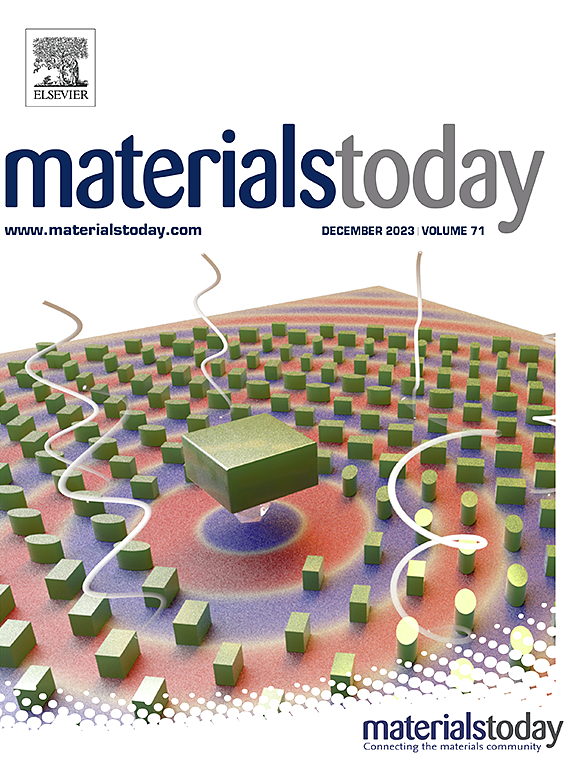Enhancing the piezoelectric performance of nitride thin films through interfacial engineering
IF 21.1
1区 材料科学
Q1 MATERIALS SCIENCE, MULTIDISCIPLINARY
引用次数: 0
Abstract
Scandium-doped aluminum nitride (ScAlN) with a wurtzite crystal structure exhibits piezoelectricity and ferroelectricity, and its application potential in micro-electromechanical devices is actively being investigated. One strategy to improve the piezoelectric/ferroelectric properties is to extend the solubility of Sc in wurtzite-type ScAlN. Herein, we demonstrated that introducing a lutetium (Lu) buffer layer with a hexagonal close-packed structure improved the crystallinity and c-axis orientation in wurtzite-type ScxAl1-xN thin films containing x = 0.508. The stabilization of the wurtzite phase was attributed to the epitaxial strain caused by the lattice matching between the Lu buffer layer and the ScAlN layer, resulting in an unprecedented piezoelectric constant of 35.5 pC/N, surpassing the previous 31.6 pC/N for x = 0.410. This value is an extension of the Sc concentration dependence predicted by first-principles calculations, suggesting that supersaturated Sc doping caused further elastic softening. Our results highlight interfacial engineering with lattice-compatible buffer layers as a straightforward and effective strategy to unlock the piezoelectric performance of ScAlN.

通过界面工程提高氮化薄膜的压电性能
具有纤锌矿晶体结构的掺钪氮化铝(ScAlN)具有压电性和铁电性,其在微机电器件中的应用潜力正在积极研究中。提高压电/铁电性能的一种策略是扩大Sc在纤锌矿型ScAlN中的溶解度。在本文中,我们证明了引入具有六边形紧密堆积结构的镥缓冲层可以改善纤锌矿型ScxAl1-xN薄膜的结晶度和c轴取向,其中x = 0.508。纤锌矿相的稳定是由于Lu缓冲层和ScAlN层之间的晶格匹配引起的外延应变,导致前所未有的压电常数为35.5 pC/N,超过了之前x = 0.410时的31.6 pC/N。该值是第一性原理计算预测的Sc浓度依赖性的扩展,表明过饱和Sc掺杂导致进一步的弹性软化。我们的研究结果强调,具有晶格兼容缓冲层的界面工程是一种直接有效的策略,可以解锁ScAlN的压电性能。
本文章由计算机程序翻译,如有差异,请以英文原文为准。
求助全文
约1分钟内获得全文
求助全文
来源期刊

Materials Today
工程技术-材料科学:综合
CiteScore
36.30
自引率
1.20%
发文量
237
审稿时长
23 days
期刊介绍:
Materials Today is the leading journal in the Materials Today family, focusing on the latest and most impactful work in the materials science community. With a reputation for excellence in news and reviews, the journal has now expanded its coverage to include original research and aims to be at the forefront of the field.
We welcome comprehensive articles, short communications, and review articles from established leaders in the rapidly evolving fields of materials science and related disciplines. We strive to provide authors with rigorous peer review, fast publication, and maximum exposure for their work. While we only accept the most significant manuscripts, our speedy evaluation process ensures that there are no unnecessary publication delays.
 求助内容:
求助内容: 应助结果提醒方式:
应助结果提醒方式:


